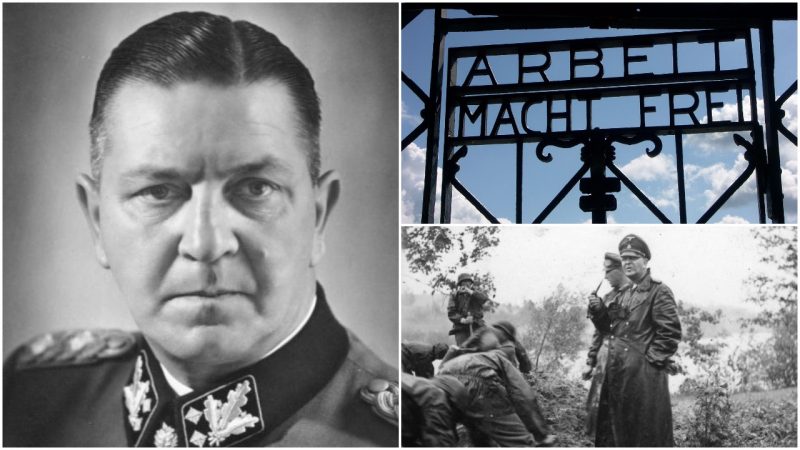A son of a station master and the youngest of 11 children, Theodor Eicke, did not like school too much, failing to graduate and dropped out at the age of 17. He fought in WWI and received the Iron Cross for bravery. In the 1920s he went on to pursue a career in the police. There he started as an informer and later became a regular policeman. He got into trouble at work because of his intense hatred for the Weimar Republic and his constant involvement in violent political demonstrations. In a nutshell, Eicke’s view of the Weimar Republic was allied with those of the Nazi party, so it was only natural that he would join them.
The Nazi party was the one place where he, unfortunately, progressed. He quickly rose in rank, mainly for his work in recruiting new members and enlarging the SS in Bavaria. In 1931, Eicke was promoted to the rank of SS colonel by one of the most notorious Nazis, Heinrich Himmler.
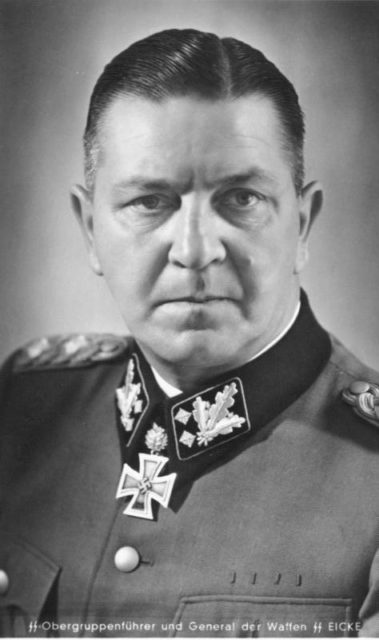
The next year, Theodor Eicke was caught preparing bomb attacks on political adversaries in Bavaria for which he was sentenced to a two-year prison sentence. As he already enjoyed the privileges and protection, he was able to flee to Italy. Eicke returned to Germany in March 1933, shortly after Hitler’s rise to power. Following a quarrel with the politician Josef Bürckel, he was arrested and detained for a couple of months in a mental asylum.
But then there was Himmler again, setting up the first official concentration camp northwest of Munich, at Dachau. Reportedly, Hitler had stated that he did not want it to be just another prison or detention camp. So, in June 1933, Himmler released Eicke from the asylum and promoted him to SS senior colonel. By the end of the month, Himmler had him appointed as commandant of Dachau.
According to Andrew Mollo, author of the book To The Death’s Head: The story of the SS, Theodor Eicke “was a rough unstable character whose violent and unruly behavior had already given Himmler many headaches. At least Himmler found an ideal backwater for his troublesome subordinate and sent him off to Dachau.”
However, Eicke was continually supported by Himmler. For instance, he had requested a permanent unit and Himmler had granted him the SS Guard Unit. Under Eicke, what started to happen at Dachau was shocking, although that was merely the beginning of the dark history of the Nazi camps.
Rudolf Höss, at that point a guard at Dachau, and as the records show, went on to become the longest-serving commandant of the Auschwitz concentration camp in WWII, had later recalled his first impressions of Eicke: “I can clearly remember the first flogging that I witnessed. Eicke had issued orders that a minimum of one company from the guard unit must attend the infliction of these corporal punishments. Two prisoners who had stolen cigarettes from the canteen were sentenced to twenty-five lashes each with the whip.”
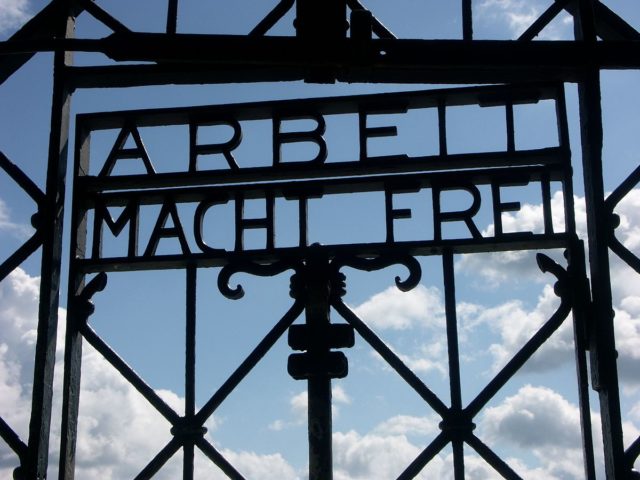
After describing how the prisoners were punished and tortured, Höss concludes his recollection as follows: “When the man began to scream I went hot and cold all over. In fact, the whole thing, even the beating of the first prisoner made me shudder. Later on, at the beginning of the war, I attended my first execution, but it did not affect me nearly so much as witnessing that first corporal punishment.”
Eicke was promoted on 30 January 1934 to the rank of SS major general. As a commander at Dachau, he had also been asked to devise further a system which could be used as a model for all future camps throughout Germany.
So, he created new guarding provisions which demanded rigid discipline; there was total obedience to order, and the punishment regulations for the detainees became even harsher. If there was one word to describe Eicke that word would be “brutal.”
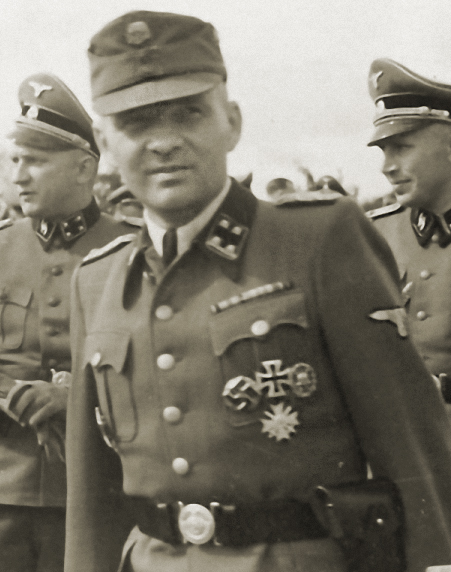
According to Charles W. Sydnor, as the Spartacus Educational also reports, “Eicke’s personality, in particular, his unremitting hatred for everything and everyone non-Nazi, influenced definitively the development, the structure, and the uniquely inhumane ethos of the concentration camps.” Eicke insured that the camps were instrumental in eradicating the adversaries of National Socialism and that’s how he looked at the prisoners; in Sydnor’s words, as “subhuman adversaries of the State, marked for immediate destruction if they offered the slightest resistance.”
This attitude was eventually adopted by other SS guards in the camp, and by the majority of other concentration camp commanders which Theodor trained too. Requiring them to be merciless, the death punishment for even the most trivial offense soon became a regular thing. Theodor went on to be inspector of the concentration camps himself, and each newly opened camp indeed followed the rigid models he established at Dachau.
Eicke was further involved in the events of the Night of the Long Knives. On that dark night in history, he killed the chief of the Nazi party’s original paramilitary wing (the SA), Ernst Röhm. The orders on Röhm’s death came as Hitler and other Nazi leaders were concerned of a possible coup d’état conducted by the SA.
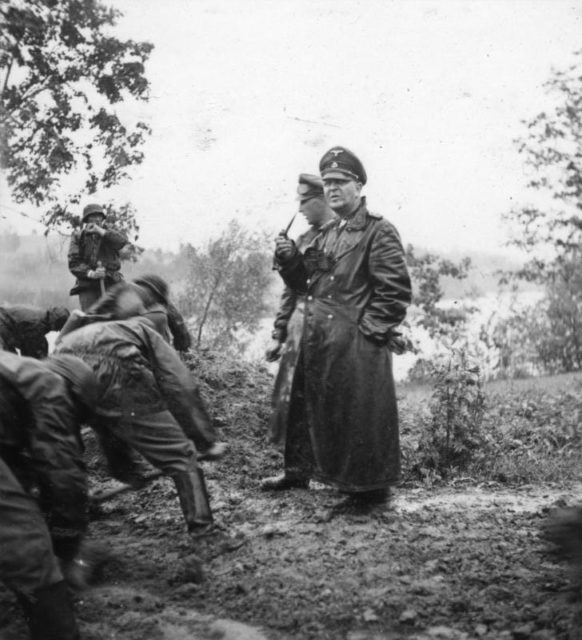
As the war begun, Eicke was reassigned to combat duty. He was killed on 26 February 1943 during the Third Battle of Kharkov on the Eastern Front, after his aircraft was shot down.
Eicke was then portrayed as a hero and was originally buried at a German military cemetery near Orelka, in what was then Soviet Russia.
